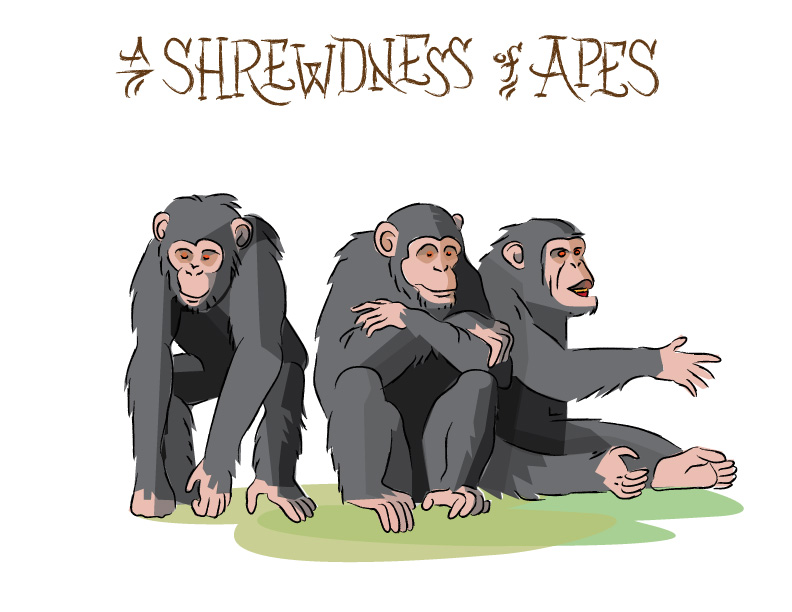New Artwork – Ian Rogers – a Shrewdness of Apes.
Another collective noun – today, a Shrewdness of Apes.

I admit, I found “shrewdness” to be an odd choice for a collective of apes. Through the magic of the interwebs, however, I found this thorough and enlightening explanation:
…let me give an example of how a noun is related to the collective through the fascinating case of a “shrewdness of apes.” On first blush we might think that this is a kind of joke also, because apes are not often thought of as shrewd. When we call someone an “ape,” we mean anything but the fact that the person shows shrewdness. As we scratch beneath the surface of this term, however, a whole new world opens. The OED has a reference to a “shrewdness of apes” in John Eliot Hodgkin’s Proper Terms (1909). This important work, which I will describe in more detail in the next essay, collated medieval manuscripts of various lists of collective nouns. Two of the more important medieval collections he put together were from what was known as “Termys of venery” (the so-called Egerton MS 1995) and the 1486 Boke of St. Albans. These 15th century manuscripts had the following: (1) “A Schrewdenys of Apys” (Egerton) and (2) “A Shrewnenes of Apis” (St. Albans). Thus this term was attested in the late 15th century. But why a “shrewdness”?
The answer becomes clear when we understand the history of the use of “shrewdness” in English. The meaning of shrewdness as “sagacity or keeness of mental perception” only goes back to Shakespeare’s Antony & Cleopatra 2.2: “So much uncurbable, her garboils, Caesar/ Made out of her impatience, which not wanted/ Shrewdness of policy too…” But three centuries before the Bard the only meaning of shrewdness was “wickedness, depravity; evil disposition, ill nature; malignity; maliciousness.” In fact, its first usage was in connection with Lucifer, the Fallen Angel. With this cluster of concepts surrounding the first appeareance of shrewdness in our language, we can more readily understand how a “shrewdness of apes” would have appeared. As a matter of fact, now that we know what I have just described, it gives us new “glasses” to study how apes might have been perceived by people in the Middle Ages…
– William R. Long, via drbilllong.com
From what I recall, apes were actually a symbol of the Devil (or the Devil’s influence on Man) in medieval art, essentially representing the baser instincts of Man manifested through various states of sinfulness.


